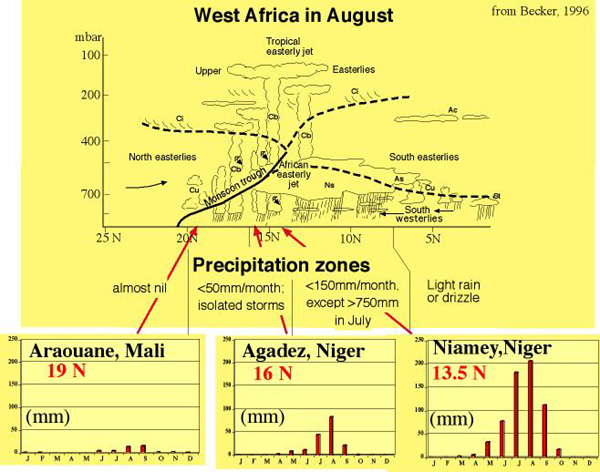Heavy rainfall on sand dunes can lead to large-scale slumping of the lee face, as
shown here in the Pinacate Region of northern Mexico. Note breciation of
the slump sheet near its toe. Photo by Nick Lancaster
Soft-sediment slumps are present within the Early Jurassic Navajo Sandstone on
the Colorado Plateau near the Arizona-Utah border.
Slumps in the Navajo Sandstone can involve more than a meter of strata,
are truncated along their upper surfaces, and are overlain by undisturbed strata.
Some Navajo Sandstone outcrops contain depositional cycles that Hunter and
Rubin (1983) interpreted as annual rhythms.
The depostional cycles are the result of shifts in wind direction. The yellow bars
each show annual increments to the dune deposits. In the diagram, the lighter-colored
avalanche deposits were emplaced by the dominant winds out of the northwest; the
darker ones are composed of wind-ripple deposits emplaced by opposing winds.
The dominant, northwesterly winds may represent the winter circulation in the northern
hemisphere, when the anticyclone off the west coast of Pangea was in its southern
position. The opposing winds may have come in spring, summer, and fall.
